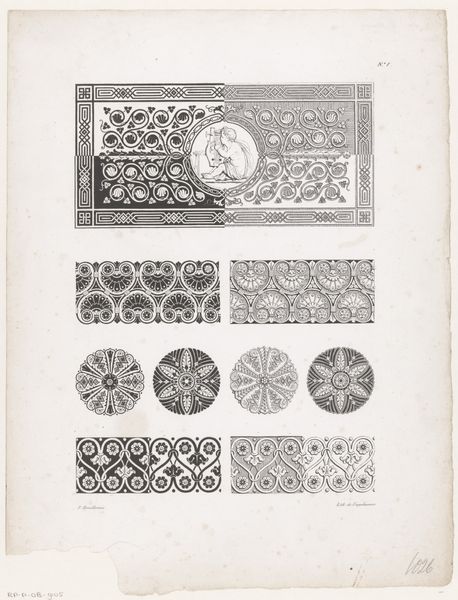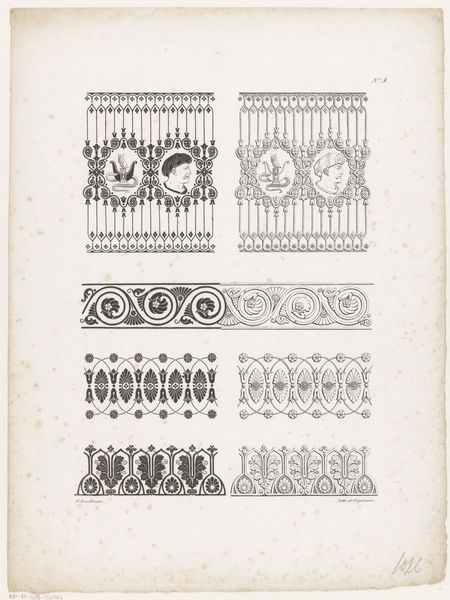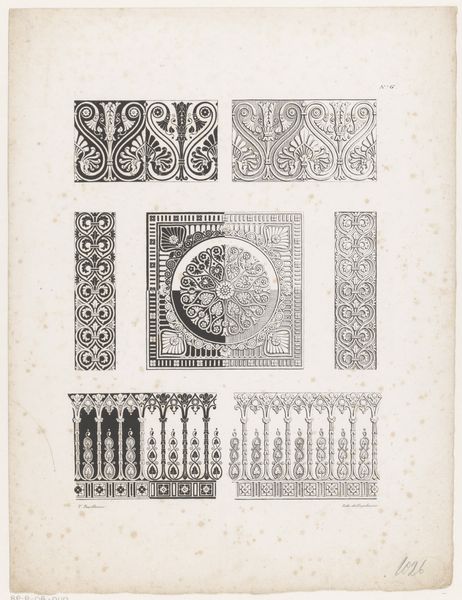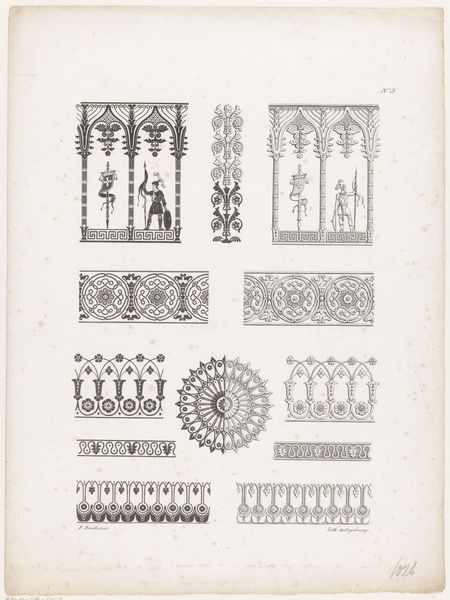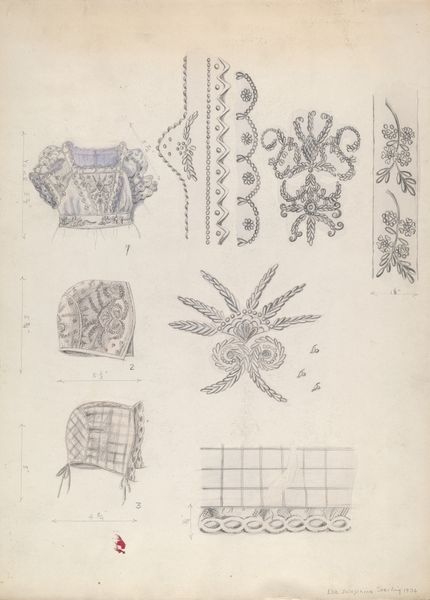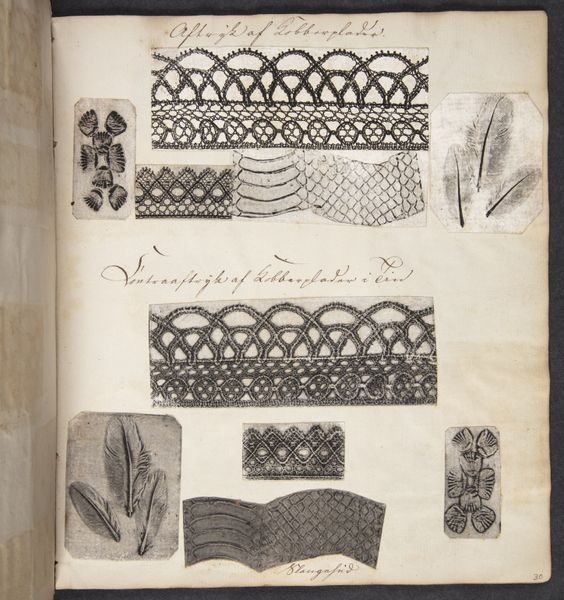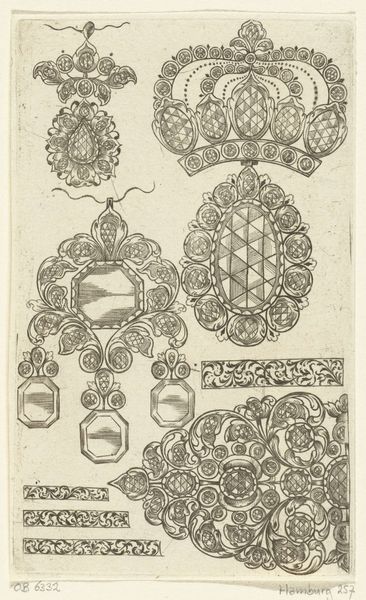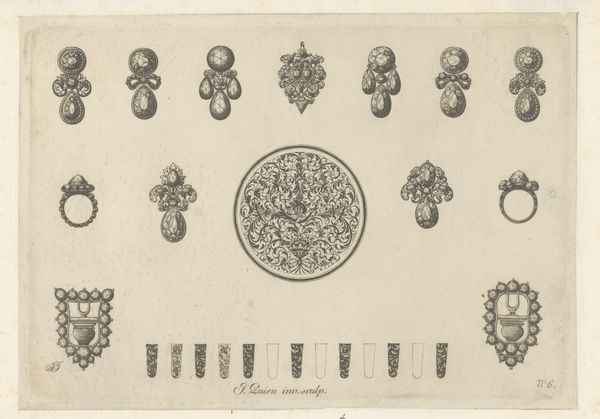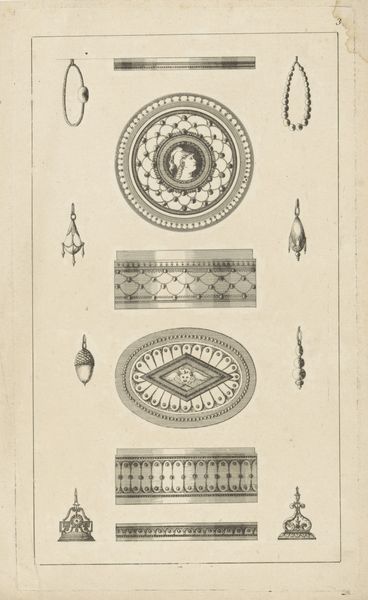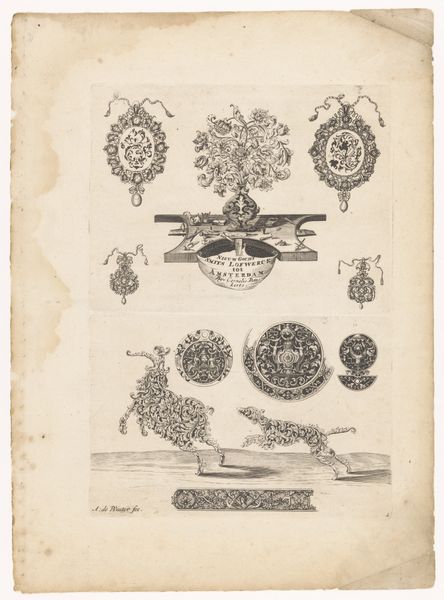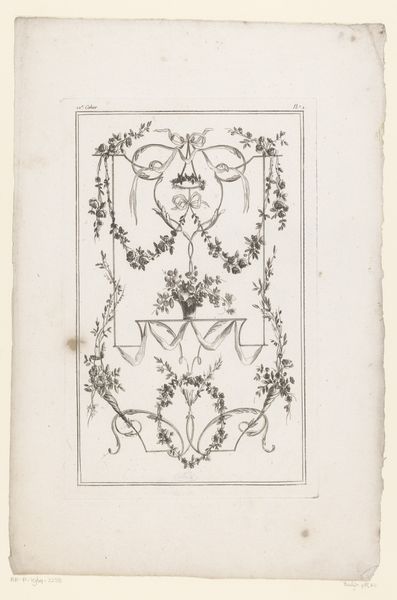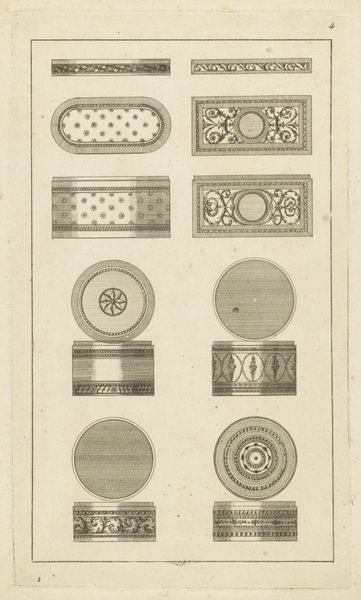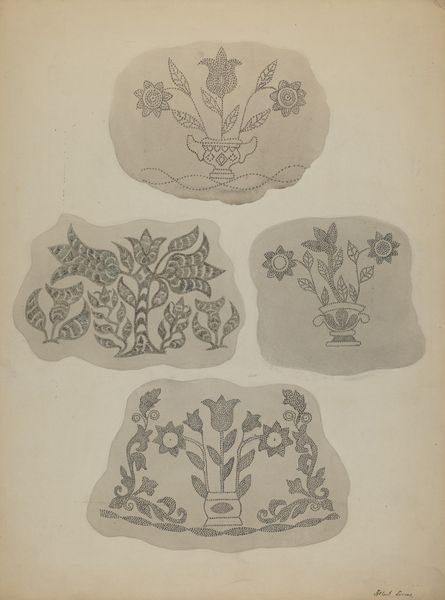
drawing, graphic-art, ornament, print, engraving
#
drawing
#
graphic-art
#
ornament
# print
#
geometric
#
engraving
Dimensions: height 355 mm, width 260 mm
Copyright: Rijks Museum: Open Domain
Curator: This is "Waaiervormige en vierkante ornamenten," or "Fan-shaped and square ornaments," an engraving and print work created between 1798 and 1839. It's currently held here at the Rijksmuseum. Editor: Immediately, I’m struck by the clarity of the linework. There's such a deliberate interplay between voided forms and dense textures. It's quite visually captivating despite being rendered almost monochromatically. Curator: Absolutely. Gottfried Engelmann, the artist, operated during a time when printed ornament served a crucial role in disseminating design ideas to artisans and manufacturers. It offered visual patterns that could elevate functional objects, and sometimes reinforced social hierarchies with classic allusions. Editor: You can really see the focus on pattern here. I mean, look at the fan-shaped designs; they almost resemble abstracted botanical elements, contained within rigid frameworks. How would the cultural climate in Engelmann's era explain his combination of naturalistic shapes with this rigorous symmetry? Curator: During that period, design books with engravings became increasingly widespread. Mass production was starting, but craftsmanship still held a revered position. Thus, works such as these showed a fusion: Nature still seen through a neoclassical order, intended for improving decorative items in emerging consumer economies. Editor: That makes sense; so it reflects an interest in both natural forms and geometric patterns and how they’re both suitable for embellishment. And how about that duality expressed between dense and light pattern-making on each motif's right and left sides, in these fan-shaped figures and central disk? Is that also reflective of the design ethos of the day? Curator: Good eye, yes! The halves show options in execution. Designers were given examples of darker versus lighter treatments in case particular manufacturing contexts constrained how elaborately decoration could be applied in specific commodities, from ceramics to textiles. Editor: It is fascinating how such apparent rigor is full of historical information about industry and art, even today. I came ready to examine the shapes themselves, and am walking away contemplating socioeconomic impact as well! Curator: Exactly. Ornament wasn't "mere" embellishment. The politics of imagery are that everything makes an argument and speaks to value. Even the humble repeatable ornament speaks of broader social changes if you examine closely enough.
Comments
No comments
Be the first to comment and join the conversation on the ultimate creative platform.
